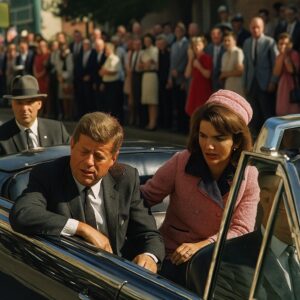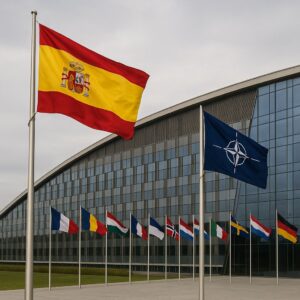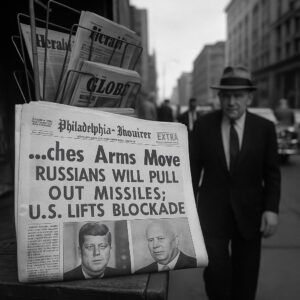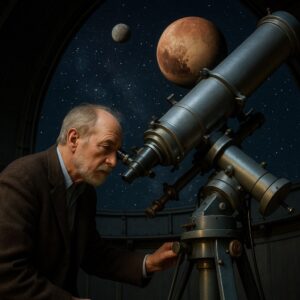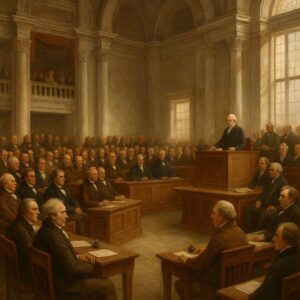The story of Harvey Milk and George Moscone’s assassinations in San Francisco is one of those moments in American history when the air seemed to shatter—when hope, long fought for and only newly born, was suddenly pierced by violence. And yet, like all such turning points, the tragedy did not end with the sound of gunshots in City Hall. Instead, it became a catalyst, a call to action, and a fire that refused to go out. Understanding how that happened—how grief transformed into a movement—is to understand a moment that changed civil rights in America forever.
The late 1970s in San Francisco were electric with change. Castro Street was pulsing with a newfound confidence, a place where LGBTQ+ people who had spent their lives hiding could finally feel sunlight on their faces. You could feel the shift on street corners—in bookstores, in cafés, in the way people carried themselves—as though a long lock had finally unlatched. At the same time, the city’s politics were undergoing a transformation from the entrenched establishment to a more progressive vision that matched the energy alive in its neighborhoods. And at the center of that shift were two men: Harvey Milk, the first openly gay man elected to major public office in the United States, and George Moscone, the progressive mayor who believed in building a city that welcomed the people other cities turned away.
Milk was not just a politician; he was a force of personality, optimism, and defiance. When he spoke, there was warmth—unpolished at times, yes, but authentic in a way that made people feel seen. What made him remarkable was not merely that he won, but how he won. He didn’t make his identity the whole of his platform, but he refused to hide it. Every victory speech, every press conference, every rally became a reminder: you didn’t need to apologize for who you were. That message lit something in people who had spent decades told that they were wrong, abnormal, sinful, or unworthy. For the first time, they had an elected official who said openly: your life is worth fighting for.
Moscone, on the other hand, was a different kind of leader—calm, thoughtful, deeply rooted in a sense of justice and fairness. While Milk energized the movement, Moscone legitimized it. As mayor, he dismantled barriers, modernized the administration, and fought against the old-guard political machine that tended to operate behind closed doors. He believed in rehabilitation over punishment, in treating drug addiction as a public health issue rather than a criminal one, and in giving marginalized communities a seat at the table. Together, he and Milk formed a sort of political symbiosis—a shared belief that San Francisco could become a city of inclusion rather than exclusion.
But history has a cruel way of inserting shadows during moments of growing light.
Dan White, a former police officer and firefighter, had once seemed like a promising young supervisor—clean-cut, disciplined, and charismatic. He had been elected the same year as Milk, but they came from opposite worlds. While Milk represented the flourishing LGBTQ+ and progressive communities, White embodied the fears of traditionalists unsettled by San Francisco’s rapid cultural shift. Lines were drawn between them—over issues like housing, redevelopment, and the direction of the city—but beneath the political disagreements there was something deeper, something rawer: White felt that the city was moving on without him.
Financial struggles, personal stress, and growing isolation pushed White toward a breaking point. When he resigned from the Board of Supervisors in November 1978, only to attempt a quick reversal days later, he approached Moscone expecting reinstatement. But the political landscape had shifted while White wasn’t looking. Moscone, who had initially considered allowing him back, ultimately changed his mind under pressure from Milk and others who believed White’s return would undermine progress. This decision, though routine in the rhythm of politics, became the spark in a powder keg.
On the morning of November 27, 1978, White dressed carefully, packed his gun, and left his wedding ring behind. He entered City Hall through a basement window to avoid the metal detectors. What happened next unfolded with devastating speed: he walked into Moscone’s office, and after a tense conversation, he shot the mayor multiple times at close range. He then walked down the corridor, reloaded, and entered Harvey Milk’s office. Milk, ever the optimist, likely believed he could calm him. He could not. The shots echoed through the marble hallways, ricocheting into history.
News spread through the city like a cold wind, first in whispers, then in gasps. People poured into the streets. Castro Street went silent—not the silence of calm, but the heavy, breathless quiet that follows a blow you never saw coming. Milk’s friends, supporters, and strangers alike walked as if in shock, clutching radios, newspapers, each other. For many LGBTQ+ people, Milk had been the first person in public power who felt like a lifeline. And suddenly, inexplicably, he was gone.
But what came next was one of the most moving displays of unity in American history. That evening, tens of thousands of people gathered for a candlelight march leading from the Castro to City Hall. Photographs from that night show a sea of flickering flames stretching for blocks—men and women weeping, holding hands, moving together in a gentle, grieving procession. There were no riots. No clashes. Only an overwhelming sense of loss and love. As those candles glowed against the dark, the message was clear: Harvey Milk’s dream would not die with him.
And yet, the road ahead was not smooth. The trial of Dan White became another blow when his defense team successfully argued that depression and poor mental state had impaired his judgment—a defense so infamous it became known as the “Twinkie Defense.” Despite killing two elected officials in cold blood, White was convicted not of murder, but of voluntary manslaughter. The sentence—seven years, of which he served only five—felt to many like a mockery of justice.
The city’s response this time was not quiet. The White Night Riots erupted outside City Hall after the verdict was announced. LGBTQ+ residents, activists, and allies who had marched peacefully in mourning months earlier now marched in fury. Police cars burned. Windows shattered. Dozens were injured. The message was unmistakable: the community would not be ignored or dismissed ever again.
And, many historians argue, the shock of White’s lenient sentence helped galvanize a movement that would grow not only in San Francisco but across the nation. Milk had predicted this in life—he had often said that visibility was the most powerful tool for change. In death, he became more visible than ever. His speeches, preserved by friends who had the foresight to save them, began circulating widely. His face became a symbol of courage. His name became a rallying cry.
That lasting impact is perhaps the greatest measure of who Harvey Milk was. Even in the darkest moment, he had said something that would outlive him: “You’ve got to give them hope.” Those words became something of a mantra—not simply a slogan but a directive. Give them hope. Give them representation. Give them the belief that tomorrow can be better.
Moscone’s legacy, too, endured. He had laid the political foundation that allowed progressive voices—including Milk’s—to rise. His belief in a more inclusive, compassionate San Francisco continued long after his death in the form of policies, community coalitions, and renewed civic engagement. The Moscone Center, named in his honor, became a physical reminder of the city he envisioned—a place where people gathered from all over the world, right in the city he had fought to unite.
Dan White’s life unraveled after his sentence. He died by suicide in 1985. His story became a cautionary tale, a tragic embodiment of the dangers of fear, resentment, and emotional collapse left unchecked.
But the story of Milk and Moscone is not truly a story about death. It is a story about what people did in response to it. Milk’s election had already proved something unprecedented: that an openly gay person could hold power without hiding, without apologizing, without the world falling apart. His assassination proved something else: that a movement could withstand even the most devastating blow.
Today, their legacies live in laws, in activism, in Pride celebrations, in political campaigns, and in the everyday courage of individuals who refuse to disappear into closets, silence, or shame. Milk’s story is taught in schools, depicted in films, honored in public statues and memorials. Moscone is remembered as the mayor who believed that progress wasn’t a threat but a necessity.
Their lives were cut short, but their work—especially the message that communities deserve hope, dignity, and representation—continues in the millions of people who still look to their example as they fight for equality.
Hope did not end in 1978. It was reborn.















